Swine Grist
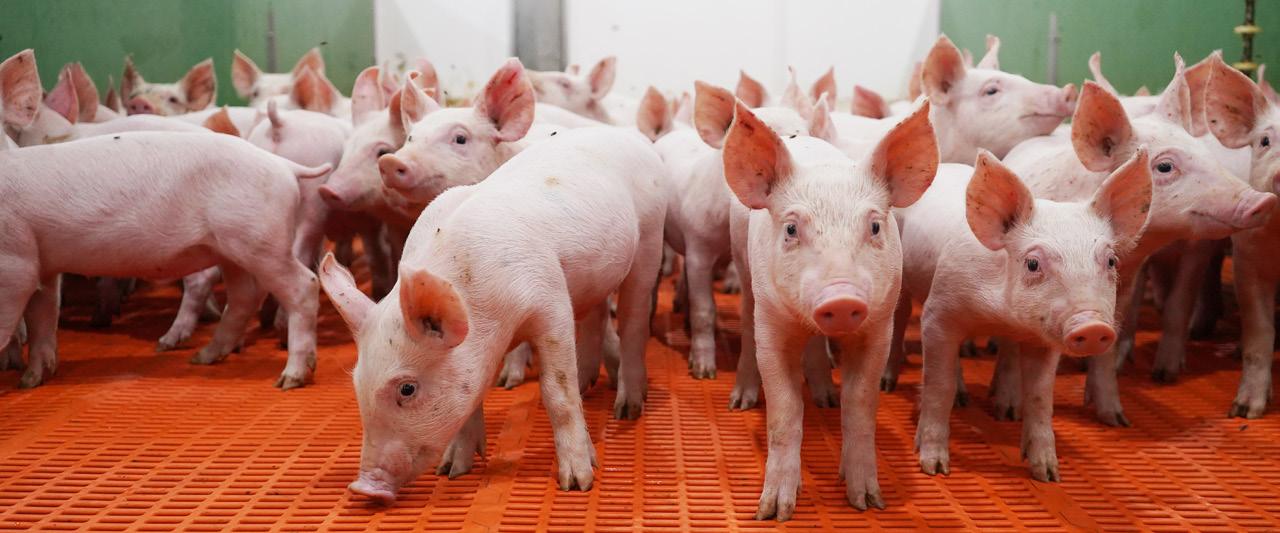

Dear Pork Producing Friends,
After experiencing a variable growing season for grains and oilseeds, we pray that producers across the Prairies achieve a bountiful and high quality harvest. In this edition of the Grist you will read of the importance of herd performance data and the importance of on-going use of data for informed decision making that have significant impact on your operation’s profitability. It has been wonderful to witness the number of internet enabled scales that have been installed in our customers’ nurseries and grower/finisher barns and the manner in which many of them are utilizing the weekly growth (ADG) reporting that is provided by Emily Miller and her team at GVF. This real time herd performance data collection can be utilized for feed budget decision making, economic modeling with the Pro Hog model and, in future for sustainability measures as well.
You are beginning to read the words "sustainability and GHG emissions" in this and recent editions of the Grand Valley Grist as our company continues to research and learn, seeking to assist meat, milk and egg producers in navigating this complicated topic and finding ways for them to further improve their operation's efficiency for

Value of Monitoring ADG and FCR
by: João Ferreira, Ph.D. FNL Monogastric Nutritionist
There is a common phrase in business management, “you can't manage what you can't measure,” and it applies so well in animal agriculture. If raising pigs was a sport at the Olympics, I believe eye-balling performance metrics would result in a direct red card without a warning. The metrics of growth performance in animal production serve as an excellent compass on a farm, guiding the producer in achieving business objectives. Setting goals, collecting data, and evaluating it periodically is valuable time that producers
improved profitability and carbon credit potential. We are proud of the Canadian meat, milk and egg industry for already being among the most GHG efficient producers of highly digestible protein in the world, and we will continue to work together to ensure that this remains the case, while improving Canadian producer profitability and sustainability.
In this edition of the Grand Valley Grist, we are pleased to announce the appointment of JD D'Elia to President of the GVF group of companies. JD officially stepped into this new role on August 6th having served as Chief Financial Officer for about three years with the company. As CEO, it will be my pleasure to continue to serve and lead with JD for many more years as we continually seek to serve the producers we are privileged work with, empowering them to produce meat, milk and eggs profitably and sustainably for the advancement of human lives, nutrition and health.
Wishing you a bountiful harvest season.
Sincerely,
Ian Ross Chief Executive Officer, GVF group of companies

must invest in their routine. Average Daily Gain (ADG) and Feed Conversion Ratio (FCR) are important metrics that producers can use to correlate feed investment with returns in meat production.
Historical data from your barn is crucial for making informed decisions about investments and budget allocation in your production system or for reformulating diets according to your goals. There are multiple factors that affect your ADG and FCR. For instance, if the animals become sick or if you wish to test a new feed additive, having historical data allows you to monitor changes in real time. Refer to Figure 1 as an example of data collected from previous herd performance. In Figure 2, the cardinal dark red line represents historical recorded data, and the cardinal light red line shows the current batch. The current batch is not gaining weight as expected. A producer with control over farm data could
decide to remove or reduce the inclusion of the alternative feed ingredient.
Animal Science 94.2 (2016): 619-628.
Koo, Bonjin, and Charles Martin Nyachoti. "Effect of oat particle size on energy and nutrient utilization in growing pigs." Journal of Animal Science 99.5 (2021) .
Tan, F.P.Y., Wang, L.F., Gao, J., Beltranena, E., Vasanthan, T., and Zijlstra, R.T. “Hindgut fermentation of starch is greater for pulse grains than cereal grains in growing pigs” Journal of Animal Science, 2021, Vol. 99, No. 11, 1–13.

Utilizing In-Pen Scales: Value for the Individual and for the Group
by: Emily Miller, Ph.D. Monogastric On-Farm Technology and Product Performance Specialist
At Fortified Nutrition Ltd., we are focused on our customers’ profitability. Successful swine production systems don’t happen by chance, but through the hard work of pork producers and with the support of those around them. Especially in modern production, it is more important than ever to measure, so that you can manage through data-driven decisions.
Let us go through a few examples to illustrate the importance of monitoring herd data. The first example is a hypothetical one of introducing an alternative feed ingredient in growing and finishing diets. In Western Canada, there are opportunities to use pulse crops such as field peas, faba beans, chickpeas or other crops as canola meal, rye, sunflower meal, and other ingredients. However, the challenge with alternative feed ingredients is the lack of studies and knowledge regarding their nutrient digestibility, metabolizable energy, and the presence of antinutritional factors. Chickpeas, faba beans, and field peas contain resistant starch, tannins, and trypsin inhibitor factors (Tan et. al., 2021), which, depending on their concentration and the amount included in the diet, can impair pig performance. Similarly, canola contains glucosinolates, high fiber, and low amino acid digestibility. Therefore, caution should be taken before adding substantial amounts of alternative feed ingredients into rations. Another example of the importance of controlling FCR and ADG is related to grain milling on the farm. Grain milling should be adjusted for each growth stage and type of grain. For example, Koo and Nyachoti (2021) studied the effect of three oat particle sizes, 765, 619, and 569 μm, on nutrient and energy digestibility in nursery pigs, resulting in three different metabolizable energy values of 2,091, 2,344, and 2,254 kcal/kg, respectively. In growing and finishing pigs, Rojas and Stein (2015) studied the reduction of corn particle size, 865, 677, 485, and 339 μm, and found metabolizable energy values of 3,313, 3,348, 3,372, and 3,434 kcal/ kg, respectively. In a subsequent study, the same researchers concluded that it is possible to formulate diets with lower soy oil inclusion through corn milling to a finer particle size, while maintaining the same performance (Rojas and Stein, 2016). Other studies have proven that proper grinding of wheat, barley, and corn improves the digestibility of feed ingredients. Incorrect grinding, on the other hand, can impair performance.
Another great example of data utilization in production is basic feed additive testing. By controlling your data and all associated factors (such as the same feed ingredients, specifications, feeding conditions, etc.), you can evaluate how beneficial a feed additive is for your production. You can assess whether the investment in the feed additive is affordable and yields a good return. Other situations that emphasize the importance of data control include disease outbreaks in the herd, mycotoxin contamination in feed, poor water quality, extreme temperatures, improper feed mixing, and unbalanced diets due to unanalyzed feed ingredients. Conversely, you can associate positive effects on FCR and ADG with factors such as water treatment, the introduction of highquality feed ingredients, pen modifications, increased feeding space, additional drinkers, and barn improvements.
Therefore, controlling and monitoring FCR and ADG is invaluable for your production system. Having control over your data allows you to interpret it in relation to changes in your production system. It helps you understand performance fluctuations in relation to the many variables affecting pig performance and enables you to intervene in real time before a problem becomes severe.
References:
Rojas, O. J., and H. H. Stein. "Effects of reducing the particle size of corn grain on the concentration of digestible and metabolizable energy and on the digestibility of energy and nutrients in corn grain fed to growing pigs." Livestock Science 181 (2015): 187-193.
Rojas, O. J., Y. Liu, and H. H. Stein. "Effects of particle size of yellow dent corn on physical characteristics of diets and growth performance and carcass characteristics of growing–finishing pigs." Journal of
One example of a tool embraced by Fortified Nutrition and many of its customers are the nursery and finishing PigScales. These are in-pen scales, which determine individual weights from a group of nursery and/or finishing pigs. The set-up is simple and provides a no-stress opportunity to capture body weights of individual pigs as they walk on and off the scale. Capturing individual animal data means that uniformity of the group can be monitored, average weights can be used to make feed changes, and daily gains can be used to monitor general performance (to give a few examples). Quickly, producers can use this body weight data, rather than the ‘eye-ball’ method, to make management or feed decisions.
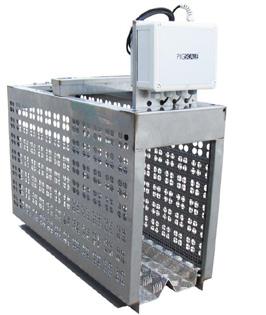
These PigScales are manufactured in The Netherlands and we currently have more than 90 scales across Canada between Fortified Nutrition and Grand Valley Fortifiers. Connection and data support for the scales are offered through the OnFarm Business Intelligence Team (support@ onfarmbi.com). The standard subscription for the PigScale includes an individual customer login with a customizable dashboard for each scale. Depending on what is beneficial to your operation, tables and graphs can be created and adjusted to suit your needs. In addition, weekly emails are sent to individual customers showing the growth curve for the current, previous, and historical batches of pigs. This allows for easy comparison of the current batch to historical performances to track if, for example, management changes were beneficial.
Considering your individual farm’s performance is key to making decisions, but it is also informative to see how other farms are performing on a similar feeding program. To explore this, all customer PigScale data from Western Canada (July 1, 2023 – June 30, 2024) was compiled. This encompassed 250 batches and about 60,000 pigs. Considering the age of the pigs where most data was available, a start age of 28 days and end age of 65 days was used for this benchmark, and only data between these ages was considered. From here, the average weight for each day of age can be calculated. One step further was determining some of the best performing batches of pigs, which in part, can demonstrate how successful the Fortified Nutrition feeding program can be when combined with excellent management practices. The qualifying factor of 60 lbs (27.2 kg) in 60 days was used to classify the “Top Performance”. In Figure 1, the average (dark red bars) and top (light red bars) performance is shown. From 28-65 days of age, the ADG was 540 g/d for the average performance and 610 g/d for the top performance. This highlights the importance of excellent management and health, in addition to high quality feed.
Fortified Nutrition is capturing this kind of body weight data every day and knowing how your pigs are growing is a great step to improving the on-farm efficiency. Once we know the body weights, the next piece of the efficiency puzzle is knowing how much feed is consumed. Pairing these two values together allows for calculation of feed conversion and further opportunities to improve efficiency. The On-Farm Business Intelligence Team is currently investigating tools available in the market to measure feed delivered to individual pens. Would you like to learn more about the scale program at Fortified Nutrition? Reach out to your representative at Fortified Nutrition or email: support@onfarmbi.com
Knowledge is Power: Using Predicted Hog and Commodity Prices to Make Decisions
by: Emily Miller, Ph.D. Monogastric On-Farm Technology and Product Performance Specialist
If only we could see into the future! We would know when market hogs would be worth the most and when feed costs would be most economical. Unfortunately, I don’t think anyone has that crystal ball. However, by considering historical and present-day markets, it is possible to make a prediction for future hog and commodity prices. Those at TrueAg, which is a Canadian company, have developed ProHog, a modelling solution for the swine industry to make those predictions. They do so by tracking data from several streams, bringing it all into one centralized place, and integrating that data. The result is a model capable of providing a well-rounded output, allowing subscribers to better understand the markets that impact swine producers.
Together with TrueAg, Fortified Nutrition is sending out reports customized for our business and those we are working with. These weekly reports estimate the future margin per pig from a farrow to finish operation each month for the coming year (Figure 1). Some of the information used:
Current and futures commodity (plus location) and hog prices (CME Lean Hog Market Contracts)
• Common feed rations from farrow to finish to estimate future feed costs, customized for Fortified Nutrition
• An average level of production for a farrow to finish farm
• Non-feed costs of production
• The following processors and grids: Maple Leaf Sig 4, Brandon, MB; OlyW21 R2, Red Deer AB; Maple Leaf Sig 4, Lethbridge, AB All data is incorporated to calculate the projected margin per pig for the coming year Margin = $/pig – (Feed COP + non-feed COP) + cull sow revenue
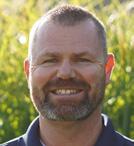
Sustainability in Ag, it can be Positive!
by: Bruce Schumann, M.Sc. Director of Sustainability, Regulatory and Quality Assurance
One of the most popular buzzwords of today is sustainability, but what does it mean and how does it impact livestock agriculture? In its simplest definition sustainability is “Meeting the needs of the present without compromising the ability of future generations to meet their own needs.”
Consumers place heavy emphasis on the environmental side of sustainability, but for farmers to be sustainable it is much more than that. Farmers are not only excellent stewards of their land and the livestock they raise, but also take care of the people that work for them, comply with all the regulatory constraints and need to be profitable while doing so. Sustainability is the sweet spot where environment, economic (profitability) and social goals all overlap.
Many companies within the livestock supply chains are making voluntary commitments towards sustainability, with a heavy emphasis on reducing the environmental impact. The Canadian Securities Administrators (CSA) are working to establish requirements for Canadian publicly traded companies to make climate-related disclosures in response to demands from investors and other stakeholders for “complete, consistent and comparable” reporting. For many of these companies, most of their greenhouse gas (GHG) emissions (between 50 – 85%), originate from their raw materials coming into their plant (upstream) and the final product destinations (downstream) after they have left the processing plant. So, the commitments publicly traded companies make for reductions in GHG emissions in the livestock sector, will be heavily reliant upon primary producers for that change.
Canada accounts for roughly 1.5% (Government of Canada. 2022 “Global greenhouse gas emissions.”) of the world’s GHG emissions and of that 1.5%, Canadian agriculture (crops & livestock) is responsible for only 8.2% of our total GHG emissions. So Canadian agriculture contributes 0.12% of the Global GHG emissions. To put this into perspective China and the USA jointly account for ~39% of the worlds GHG emissions. Despite our small contribution to the overall emissions in the world, 196 countries around the world, including Canada, have all made climate commitments, through the Paris Agreement, to reduce their total GHG emissions from 2005 levels by 43% by 2030 (United Nations Climate Change).
We are a nation that produces some of the most sustainable pork, chicken, beef, milk and eggs in the world, and we are continually improving. At the farm level, GVF’s purpose is to help our customers, like you, to achieve the best possible production at the lowest possible cost. We firmly believe that the most efficient producers will ultimately become the most profitable and the most sustainable. The improvements in economic and production efficiencies will not only put more dollars in the hands of farmers, but it will also decrease the greenhouse gas emission intensities, by producing more with less. Environment and Climate Change Canada in 2023 reported Canadian Livestock Production emissions since 1990 (Figure 1). Livestock numbers in Canada have increased by 46.9% between 2004 and 2021 (predominantly from increasing swine and poultry numbers). Despite producing 47% more livestock, our livestock production emissions have only increased by 13% since 1990. And since 2005, Canadian farmers have reduced total livestock emissions by almost 18%.
By gaining access to predicted hog and commodity prices, feed costs, and margin per hog, it can help with business decisions on farm. For example, how are prices of market hogs expected to change with the seasons? Where is the price of soybean meal expected to go? Should you consider buying more of a certain commodity? Should you consider a change in your premix to better accommodate the commodities that are most economical? Should you consider adding to your opperation or finishing all your own hogs? The weekly Margin Updates can provide some insight into the predicted hog and commodity market situations for the coming year.
Are you interested in receiving these weekly margin Updates directly to your inbox? Scan the QR Code or email support@onfarmbi.com to subscribe.

Would you like to have a customized prediction for your operation? Fortified Nutrition can help you with that! Speak to your representative today or email: support@onfarmbi.com.
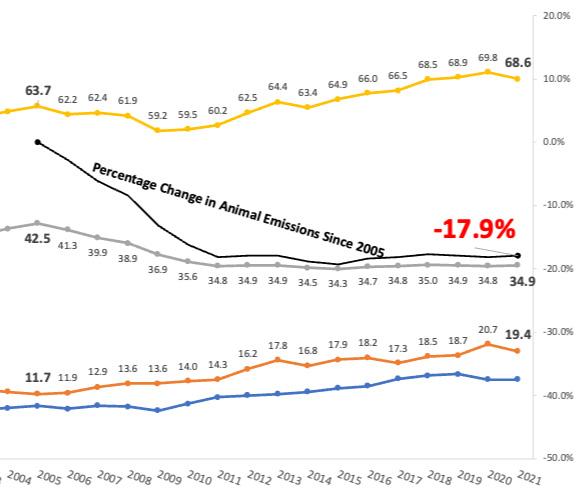
It is critical that we capture, track and improve these production metrics on farm. We need to continually measure and relate our improvements in growth and
reproduction to palpable reductions in GHG emissions per kg of meat, milk and eggs produced. This information then needs to be shared, telling the great-news story about livestock agriculture in Canada to policy makers, and ensure that most efficient livestock production systems have preferential access to supply global markets.
As a company and as an industry we are committed to advocating for livestock producers and the crucial role livestock has and will continue to play in feeding the world. Grand Valley Fortifiers has commenced some sustainability initiatives, with more to come in the future. We have begun adding pro-agriculture, sustainability messages on our newest trucks to help educate the general public how Canadian farmers already produce some of the most sustainable pork, beef, dairy and poultry products in the world.
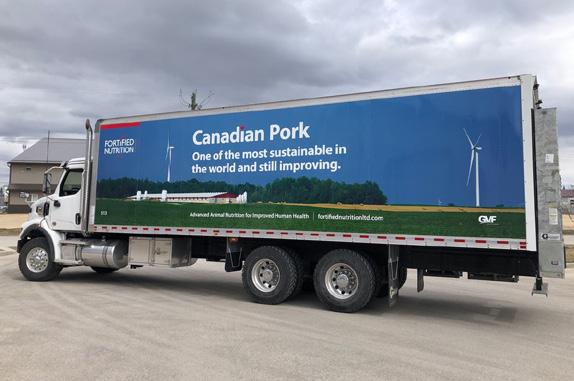
We have performed on-farm environmental assessments for some of our pork, dairy and poultry producers. Our initial results confirm what we believed. We know that ~70% of total livestock emissions comes from feed, and so, landbased producers, manufacturing their own-feed on farm and using ingredients grown and harvested under their control, are the most environmentally efficient compared to the national averages. This puts these livestock producers in a powerful position when processors and grocery stores are looking for demonstratable lower carbon-footprint livestock for their supply chain and hopefully to take advantage of carbon credits in the future.
It is therefore critical to track growth and production throughout your entire operation. GVF’s sustainability mission is to enable livestock operations with data-driven insights, and business intelligence solutions to optimize feed & production efficiency, profitability, and resource stewardship, fostering everimproving meat, milk and egg production. We are working with producers to capture, analyze, interpret and make informed decisions to allow them to be the most efficient, most profitable and most sustainable as they can be. For more information on how GVF can help improve your farm sustainability, contact Bruce Schumann or your GVF Livestock Business Consultant today.
References:
https://unfccc.int/process-and-meetings/the-paris-agreement
https://www.canada.ca/en/environment-climate-change/services/environmental-indicators/ global-greenhouse-gas-emissions.html

Commodity Outlook
by: JP Thibault Business Development Manager

Grain Prices Have Bottomed! Markets peak on bullish news and bottom on bearish news. The news was as bearish as it could get a few weeks ago when corn and soybean prices both made exhaustion bottoms. So now what? Throughout history if corn and soybeans markets bottom during August, it is fairly common that the lows for the next year are made either in September or October. That dynamic is simple to understand: if near the end of a marketing year (August 31st) prices are at their lows and market sentiment is very bearish, that is not going to change overnight just because a new marketing year has started. The Supply & Demand report from USDA on September 12th was bearish for corn as the raised yield and neutral for bean. Market participants will now look at weather forecast and South America planting season to get a sense of where these prices will go.

BBQ Tour Wrap Up
by: David Ross VP of Customer Advocacy & Experiential Marketing
This July it was a privilege for Ian and I, along with Emily Miller and various members of our Fortified Sales and Nutrition Teams and our Farmers Depot reps, to travel across the prairies and visit with many pork and poultry producers during our multi-stop BBQ tour. On July 9- 11th we visited Manitoba and hosted producers in Brandon and Starbuck, and then on July 22 – 26th we visited with producers in Red Deer, Drumheller, and Lethbridge Alberta and then on too Swift Current and Saskatoon, Saskatchewan. At each of these stops, we enjoyed strong attendance and speakers who shared informative presentations with interested producers who asked good, thoughtprovoking questions. These times visiting with you, our valued customers, over a delicious steak meal are deeply appreciated and enjoyed. Thank you to all who came out. We look forward to hosting again next year.
Join us in Welcoming Our New GVF Group of Companies President!
As we approach September 2024, I am reminded that I will be celebrating 33 years of full-time service with Grand Valley Fortifiers and the GVF group of companies. What a wonderful, exciting, challenging, educational and experiential three plus decades it has been! After beginning my career in Human Resources, Marketing and Value Chain Development, it was an honor to become President and Chief Executive Officer (CEO) in April 2006.
Although it is hard for me to believe that 18 years have passed since taking on this role, looking back on these (almost) two decades, it is amazing to consider all that has transpired within the Canadian livestock industry and within the GVF of companies since then. What a privilege it has been to get to know and work alongside of so many progressive livestock producers, ingredient suppliers and professionals across the country who are passionate about the production of meat, milk and eggs to feed Canadians and people around the world!
As the company has continued to grow in size, reach, impact and complexity, and with the ambitious goals that we have set in terms of serving our current and future customers even more innovatively and well while increasing the value we bring to their livestock businesses, we have concluded that it is time to segregate the responsibilities of a President from those of a CEO.

It is within the context of this decision that we are pleased to announce that JD D’Elia is rejoining the GVF group of companies and stepping into the role of President effective August 6th
David Ross and I and the entire team are delighted to have JD rejoin our Senior Leadership Team and take on this significant new role. During his time with us as Chief Financial Officer, JD personified our company’s values, and held the humble strength of character that is becoming of a senior leader at this company.
Ian Ross David Ross

We trust that you will join us in welcoming JD D’Elia back to our GVF family. If you wish to contact JD for any reason, feel free to email him at: jddelia@grandvalley.com | 519-621-0241 Ext. 2243
Thought of the Day!
“Blessed are the meek, for they shall inherit the earth.” Matthew 5:5
"In popular thinking the term meek implies weakness. The word Jesus used had a different meaning. His picture of meekness is that of a stallion that has been brough into subjection to its master. Whereas it once fought against any attempt to bring it under control, resisting direction with all its strength, now it yields its will to its master. The stallion has lost none of its strength or endurance; it has simply turned these over to the control of the master."
Meekness then, as described in the beatitudes, is strength under control. Re-read the verse above with this deeper understanding of how Jesus is calling us to live.
– An exert from Experiencing God Day by Day by Henry T. & Richard Blackaby

